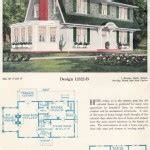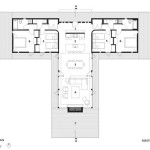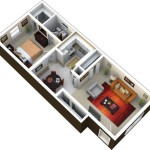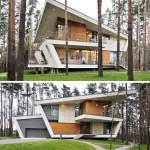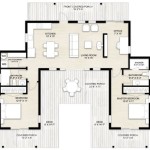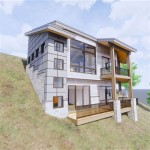Beach House Floor Plans are detailed blueprints that outline the layout, room dimensions, and structural features of a beach house. These plans serve as a guide for architects, builders, and homeowners during the design and construction process, ensuring that the house meets both functional and aesthetic requirements. One common application of Beach House Floor Plans is in the creation of vacation homes on coastal properties, where homeowners desire a space that maximizes ocean views, natural light, and indoor-outdoor living.
Floor plans for beach houses often incorporate specific design elements tailored to the unique demands of coastal environments. These elements may include open floor plans promoting ample natural light and cross-ventilation, large windows and sliding glass doors connecting indoor and outdoor spaces, and elevated decks or patios for outdoor living. Additionally, Beach House Floor Plans often consider the placement of rooms to optimize ocean views and minimize the impact of harsh weather conditions.
In the following sections, we will delve deeper into the various aspects of Beach House Floor Plans, exploring their benefits, key considerations, and design trends. We will also provide specific examples and insights to guide homeowners and professionals in creating functional and aesthetically pleasing beach house designs.
Beach House Floor Plans should prioritize certain key considerations to ensure functionality, comfort, and aesthetic appeal:
- Open floor plans
- Abundant natural light
- Ocean view optimization
- Indoor-outdoor living
- Elevated decks/patios
- Natural ventilation
- Durable materials
- Energy efficiency
- Hurricane resistance
- Flood zone considerations
By incorporating these elements into Beach House Floor Plans, homeowners can create spaces that are not only beautiful but also functional and resilient in the face of coastal conditions.
Open floor plans
Open floor plans are a defining characteristic of many modern Beach House Floor Plans. They involve minimizing the use of walls and partitions to create a more spacious, airy, and interconnected living area. This design approach offers several advantages for beach houses:
- Maximized natural light: Open floor plans allow for larger windows and sliding glass doors, which maximize the amount of natural light entering the home. This creates a brighter and more inviting living space, reducing the need for artificial lighting during the day.
- Enhanced indoor-outdoor flow: Open floor plans seamlessly connect indoor and outdoor spaces, making it easy to transition between the two. This is particularly beneficial in beach houses, where homeowners often want to take advantage of the coastal views and outdoor living opportunities.
- Improved ventilation: Open floor plans promote natural ventilation by allowing air to circulate more freely throughout the home. This helps to keep the house cool and comfortable, especially during warm summer months.
- Increased sense of spaciousness: By eliminating unnecessary walls and partitions, open floor plans create a more spacious and expansive feel, which is particularly desirable in smaller beach houses.
Incorporating open floor plans into Beach House Floor Plans can create a more functional, comfortable, and aesthetically pleasing living space. However, it is important to note that open floor plans may not be suitable for all homeowners, as they can sometimes compromise privacy and sound insulation.
Abundant natural light
Incorporating abundant natural light into Beach House Floor Plans is crucial for creating a bright, inviting, and energy-efficient living space. Natural light offers numerous benefits for beach houses, including:
- Reduced energy consumption: Natural light can significantly reduce the need for artificial lighting during the day, leading to lower energy consumption and utility bills.
- Improved mood and well-being: Exposure to natural light has been shown to have positive effects on mood, sleep patterns, and overall well-being.
- Enhanced visual appeal: Natural light illuminates the interior of a beach house, showcasing its architectural features, dcor, and ocean views.
To maximize natural light in Beach House Floor Plans, architects and designers employ several strategies:
- Large windows and sliding glass doors: Installing large windows and sliding glass doors allows for ample natural light to enter the home. These openings can be strategically placed to capture ocean views and connect indoor and outdoor spaces.
- Skylights and solar tubes: Skylights and solar tubes are effective ways to bring natural light into areas of the house that may not have access to direct sunlight, such as hallways, bathrooms, and closets.
- Open floor plans: Open floor plans minimize the use of walls and partitions, allowing natural light to penetrate deeper into the home. This design approach creates a more spacious and airy living area.
- Light-colored interiors: Using light-colored paint, flooring, and furnishings helps to reflect and distribute natural light more effectively, making the space feel brighter and more inviting.
By incorporating these strategies into Beach House Floor Plans, homeowners can create spaces that are not only beautiful but also filled with an abundance of natural light, enhancing the overall comfort, well-being, and energy efficiency of the home.
Ocean view optimization
In Beach House Floor Plans, optimizing ocean views is a critical design consideration. Homeowners desire to maximize their connection to the coastal landscape and enjoy breathtaking vistas from various vantage points within the home. To achieve this, architects and designers employ several strategies:
- Floor-to-ceiling windows and sliding glass doors: Installing floor-to-ceiling windows and sliding glass doors along the oceanfront facade allows for unobstructed views of the ocean from multiple rooms within the house. These large openings blur the boundaries between indoor and outdoor spaces, creating a seamless connection to the surrounding environment.
- Elevated decks and patios: Incorporating elevated decks and patios into the floor plan provides additional opportunities to enjoy ocean views. These outdoor living areas extend the living space beyond the interior of the house, allowing homeowners to relax, dine, and entertain while taking in the coastal scenery.
- Strategic room placement: The placement of rooms within the floor plan should be carefully considered to maximize ocean views. For example, the living room, dining room, and master bedroom are often positioned to face the ocean, ensuring that these frequently used spaces offer the best views.
- Multi-level design: Multi-level floor plans can provide panoramic ocean views from different elevations. Upper-level rooms, such as a loft or rooftop terrace, offer elevated perspectives of the coastline, while lower-level rooms may have direct access to the beach or waterfront.
By incorporating these strategies into Beach House Floor Plans, homeowners can create spaces that fully embrace the beauty of the coastal landscape, providing a truly immersive and unforgettable living experience.
Indoor-outdoor living
Indoor-outdoor living is a defining characteristic of many modern Beach House Floor Plans. It involves seamlessly connecting the interior and exterior spaces of the home, creating a more cohesive and expansive living environment. This design approach offers several advantages for beach houses:
- Expanded living space: Indoor-outdoor living extends the living space beyond the interior of the house, providing additional areas for relaxation, dining, and entertainment. This is particularly beneficial for smaller beach houses, as it creates the illusion of more space.
- Enhanced connection to nature: Indoor-outdoor living allows homeowners to feel more connected to the natural surroundings of the beach. By blurring the boundaries between inside and outside, it brings the beauty of the coastal landscape into the home.
- Improved ventilation and natural light: Indoor-outdoor living promotes natural ventilation and allows for more natural light to enter the home. This helps to create a healthier and more comfortable living environment.
- Increased property value: Beach houses with well-designed indoor-outdoor living spaces tend to have higher property values, as they offer a unique and desirable living experience.
To achieve seamless indoor-outdoor living in Beach House Floor Plans, architects and designers employ several strategies:
- Large windows and sliding glass doors: Installing large windows and sliding glass doors along the exterior walls creates a visual connection between the interior and exterior spaces. These openings allow for ample natural light to enter the home and provide easy access to outdoor areas.
- Decks and patios: Incorporating decks and patios into the floor plan extends the living space outdoors. These outdoor areas can be used for dining, lounging, or entertaining, and they offer stunning views of the surrounding landscape.
- Open floor plans: Open floor plans minimize the use of walls and partitions, creating a more fluid transition between indoor and outdoor spaces. This design approach allows for easy movement between different areas of the home and fosters a sense of spaciousness.
- Outdoor kitchens and fireplaces: Outdoor kitchens and fireplaces add functionality and comfort to indoor-outdoor living spaces. They allow homeowners to cook, dine, and relax outdoors, extending the enjoyment of the coastal environment.
By incorporating these strategies into Beach House Floor Plans, homeowners can create spaces that seamlessly blend indoor and outdoor living, providing a truly immersive and unforgettable experience.
Elevated decks/patios
Elevated decks and patios are essential elements of Beach House Floor Plans, offering homeowners the opportunity to enjoy outdoor living spaces with stunning ocean views. These elevated structures extend the living area beyond the interior of the house, creating additional spaces for relaxation, dining, and entertainment.
Benefits of Elevated Decks/Patios in Beach House Floor Plans:
- Unobstructed ocean views: Elevating decks and patios above ground level provides unobstructed views of the ocean, allowing homeowners to fully appreciate the coastal landscape from the comfort of their own home.
- Expanded living space: Elevated decks and patios effectively expand the living space of a beach house, providing additional areas for outdoor activities and entertaining guests.
- Increased privacy: Elevated decks and patios offer increased privacy, as they are typically situated above theof passersby and neighbors.
- Protection from the elements: Elevated decks and patios provide protection from the elements, such as rain, wind, and sun exposure. This allows homeowners to enjoy outdoor living spaces even during inclement weather.
Design Considerations for Elevated Decks/Patios:
- Size and shape: The size and shape of the elevated deck or patio should be carefully considered to ensure that it complements the overall design of the beach house and provides adequate space for intended activities.
- Access and circulation: Easy access to the elevated deck or patio is essential. Designers should consider the placement of stairs or ramps to ensure safe and convenient movement between the indoor and outdoor spaces.
- Materials and construction: Elevated decks and patios should be constructed using durable materials that can withstand the harsh coastal environment, such as pressure-treated lumber or composite decking.
- Privacy and screening: Privacy and screening elements, such as railings, screens, or, can be incorporated into the design to provide privacy and protection from the elements.
Integration with Indoor Spaces:
Elevated decks and patios should be seamlessly integrated with the indoor spaces of the beach house. Large windows and sliding glass doors can be used to create a visual connection between the two areas, allowing for natural light and ventilation to flow through the home.
By carefully considering these factors, architects and designers can create elevated decks and patios that enhance the functionality, aesthetics, and overall enjoyment of Beach House Floor Plans.
Natural ventilation
Natural ventilation is a crucial aspect of Beach House Floor Plans, as it helps to maintain a comfortable indoor environment while reducing energy consumption. By incorporating natural ventilation strategies, architects and designers can create beach houses that are healthier, more energy-efficient, and more enjoyable to live in.
Benefits of Natural Ventilation in Beach House Floor Plans:
- Improved indoor air quality: Natural ventilation helps to improve indoor air quality by introducing fresh, outdoor air into the home. This helps to reduce the concentration of pollutants, such as dust, pollen, and VOCs (volatile organic compounds), which can contribute to respiratory problems and other health issues.
- Reduced energy consumption: Natural ventilation can significantly reduce energy consumption by reducing the reliance on mechanical ventilation systems, such as air conditioners and fans. This can lead to lower energy bills and a smaller carbon footprint.
- Enhanced comfort: Natural ventilation helps to create a more comfortable indoor environment by regulating temperature and humidity levels. Fresh air circulation helps to keep the home cool and dry, reducing the risk of heat stress and respiratory problems.
- Increased occupant well-being: Natural ventilation has been shown to have positive effects on occupant well-being. Fresh air circulation can improve mood, reduce stress, and boost cognitive function.
Design Considerations for Natural Ventilation:
- Cross-ventilation: Cross-ventilation is a passive ventilation technique that involves creating openings on opposite sides of a room or building to allow air to flow through naturally. In Beach House Floor Plans, cross-ventilation can be achieved by placing windows and doors on opposite walls or by incorporating breezeways and courtyards.
- Stack ventilation: Stack ventilation is another passive ventilation technique that utilizes the difference in air density between warm and cold air. In Beach House Floor Plans, stack ventilation can be achieved by placing windows or vents at different heights on a wall or by incorporating chimneys or solar chimneys.
- Wind scoops and turbines: Wind scoops and turbines are mechanical ventilation devices that can be used to enhance natural ventilation. Wind scoops are placed on the roof of a building to capture and direct wind into the home, while turbines use wind power to extract air from the home.
- Operable windows and doors: Operable windows and doors are essential for natural ventilation. They allow occupants to control the amount of airflow into the home and to adjust the ventilation strategy based on changing weather conditions.
Integration with Building Design:
Natural ventilation strategies should be carefully integrated with the overall design of the beach house. The placement of windows, doors, and other openings should be carefully considered to maximize airflow and minimize the impact of prevailing winds.
By incorporating natural ventilation strategies into Beach House Floor Plans, architects and designers can create homes that are not only beautiful but also healthy, energy-efficient, and comfortable to live in.
Durable materials
When selecting materials for Beach House Floor Plans, durability is of paramount importance. Beach houses are exposed to harsh coastal conditions, including strong winds, salt spray, and UV radiation. Therefore, materials used in these homes must be able to withstand these elements and maintain their integrity over time.
One of the most important considerations for durable materials in Beach House Floor Plans is moisture resistance. Moisture can cause significant damage to building materials, leading to rot, mold, and structural issues. Therefore, materials such as pressure-treated lumber, composite decking, and moisture-resistant drywall should be used in areas that are prone to moisture, such as decks, patios, and bathrooms.
Another important consideration is wind resistance. Strong winds can cause damage to roofing, siding, and windows. To ensure the durability of Beach House Floor Plans, wind-resistant materials should be used, such as impact-resistant windows and doors, hurricane shutters, and metal roofing. These materials can withstand high winds and protect the home from damage.
Finally, UV resistance is also crucial for Beach House Floor Plans. UV radiation from the sun can cause fading, cracking, and deterioration of building materials. To protect against UV damage, materials such as UV-resistant paint, sealants, and fabrics should be used. These materials will help to maintain the appearance and integrity of the home over time.
By selecting durable materials that are resistant to moisture, wind, and UV radiation, architects and designers can create Beach House Floor Plans that are built to withstand the harsh coastal environment and provide years of enjoyment for homeowners.
Energy efficiency
Energy efficiency is a crucial consideration in Beach House Floor Plans, as it can significantly reduce energy consumption and operating costs while enhancing the home’s comfort and sustainability. Architects and designers employ various strategies to improve energy efficiency in these homes, including:
- Insulation: Proper insulation is essential for maintaining a comfortable indoor temperature and reducing heat loss during the winter and heat gain during the summer. Beach House Floor Plans should incorporate insulation in walls, ceilings, and floors to minimize energy consumption for heating and cooling.
- Windows and doors: Energy-efficient windows and doors play a vital role in reducing heat transfer and air leakage. Look for windows with double or triple glazing, low-E coatings, and tight seals. Similarly, choose doors with weatherstripping and insulated cores to prevent drafts and heat loss.
- Appliances and lighting: Energy-efficient appliances and lighting fixtures can significantly reduce energy consumption. Beach House Floor Plans should specify Energy Star-rated appliances and LED lighting, which consume less energy while providing adequate illumination.
- Renewable energy sources: Incorporating renewable energy sources, such as solar panels or geothermal systems, can further enhance energy efficiency in Beach House Floor Plans. These systems can generate electricity or heat from natural resources, reducing reliance on fossil fuels and lowering energy costs.
By implementing these energy-efficient strategies, Beach House Floor Plans can create homes that are not only comfortable and stylish but also environmentally friendly and cost-effective to operate.
Hurricane resistance
In coastal areas prone to hurricanes, hurricane resistance is a critical consideration in Beach House Floor Plans. Hurricanes can cause catastrophic damage to homes, so it is essential to design and construct beach houses that can withstand high winds, storm surge, and flooding.
- Reinforced foundation: The foundation of a beach house should be strong enough to resist the uplift forces of high winds and the hydrostatic forces of floodwaters. Reinforced concrete foundations with embedded steel rebar are commonly used to provide the necessary strength.
- Wind-resistant framing: The framing of a beach house should be designed to withstand high winds. This includes using strong framing materials, such as pressure-treated lumber or engineered wood products, and reinforcing the framing with hurricane straps or shear walls.
- Impact-resistant windows and doors: Windows and doors are particularly vulnerable to damage from wind-borne debris during hurricanes. Beach House Floor Plans should specify impact-resistant windows and doors, which are designed to withstand the impact of flying objects.
- Elevated design: Elevating a beach house above the ground level can help to protect it from storm surge and flooding. Beach House Floor Plans should consider elevating the living spaces of the home on piers or pilings to minimize the risk of damage from high water.
By incorporating these hurricane-resistant features into Beach House Floor Plans, architects and designers can create homes that are better able to withstand the destructive forces of hurricanes, providing peace of mind and protection for homeowners.
Flood zone considerations
When designing Beach House Floor Plans, it is crucial to consider flood zone regulations and requirements. Flood zones are designated areas that have a high risk of flooding, and building codes in these areas often mandate specific construction measures to minimize the risk of flood damage.
- Base flood elevation (BFE): The BFE is the elevation of the floodwaters that have a 1% chance of occurring in any given year. Beach House Floor Plans must be designed to elevate the living spaces of the home above the BFE to prevent flooding during major storms.
- Flood insurance: In flood zones, homeowners are required to purchase flood insurance to protect their property from flood damage. The cost of flood insurance is based on the risk of flooding at the property, and Beach House Floor Plans that are designed to minimize flood risk can qualify for lower insurance premiums.
- Flood-resistant materials and construction methods: Beach House Floor Plans should specify flood-resistant materials and construction methods to minimize the risk of damage from flooding. This includes using moisture-resistant materials, such as pressure-treated lumber and composite decking, and elevating electrical outlets and appliances above the BFE.
- Flood evacuation plan: In the event of a flood warning, it is important to have a plan for evacuating the beach house safely. Beach House Floor Plans should include a designated evacuation route and an emergency contact list.
By carefully considering flood zone regulations and requirements, architects and designers can create Beach House Floor Plans that are safe, resilient, and insurable in flood-prone areas.










Related Posts

